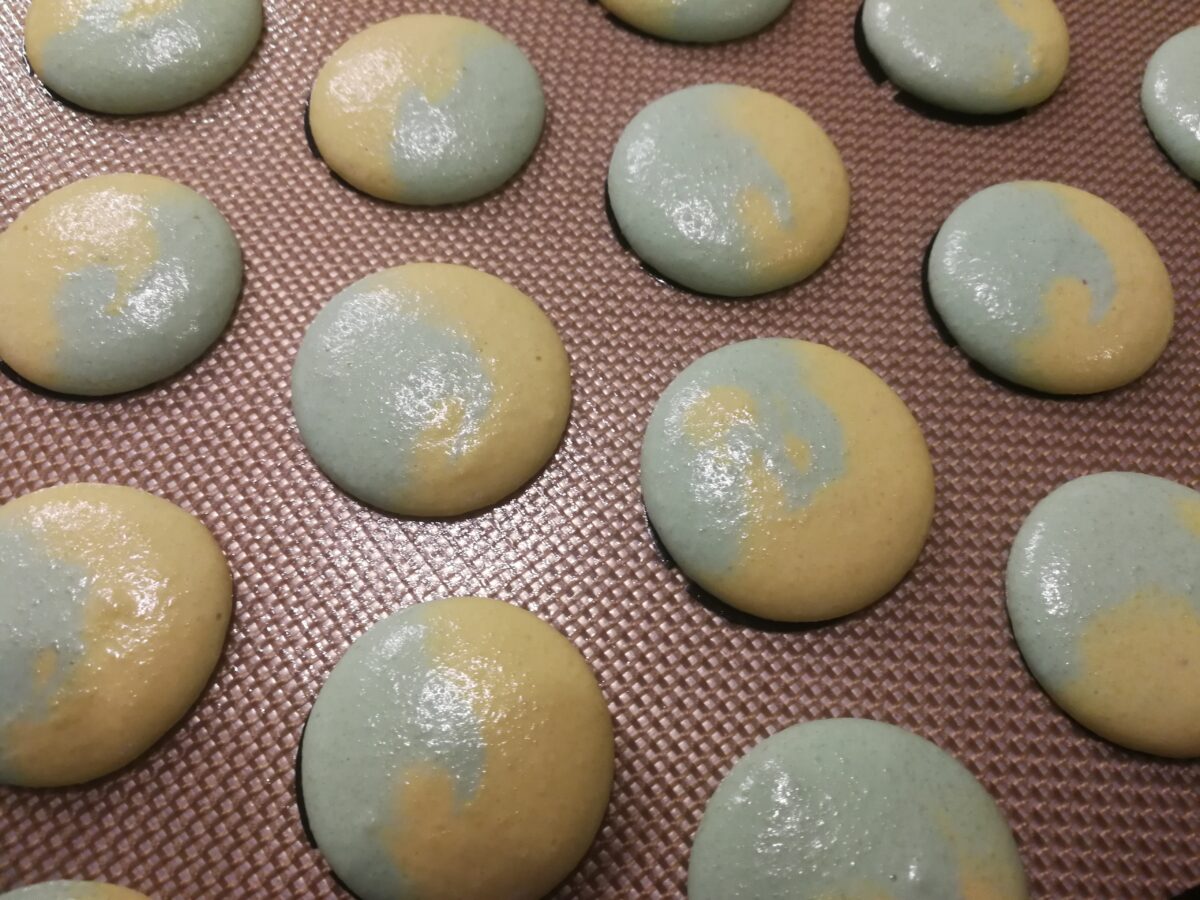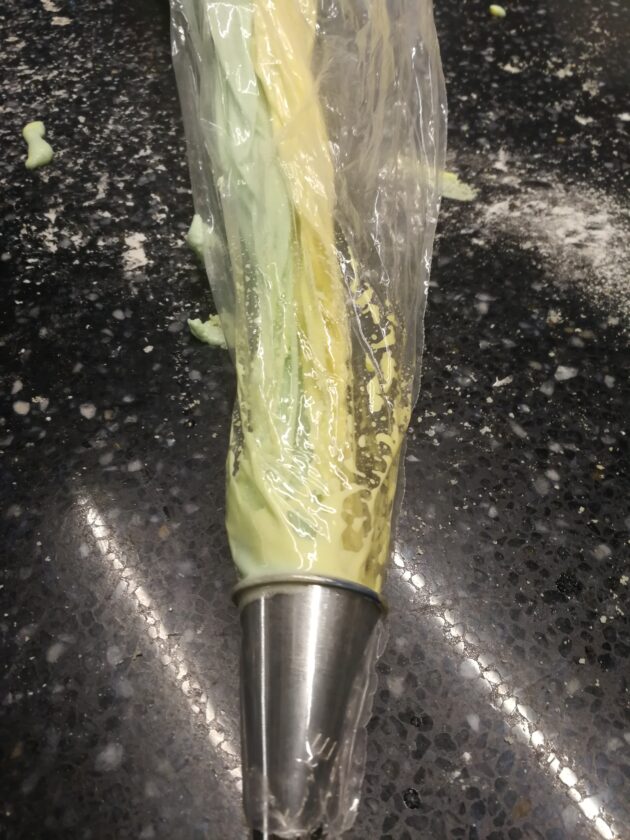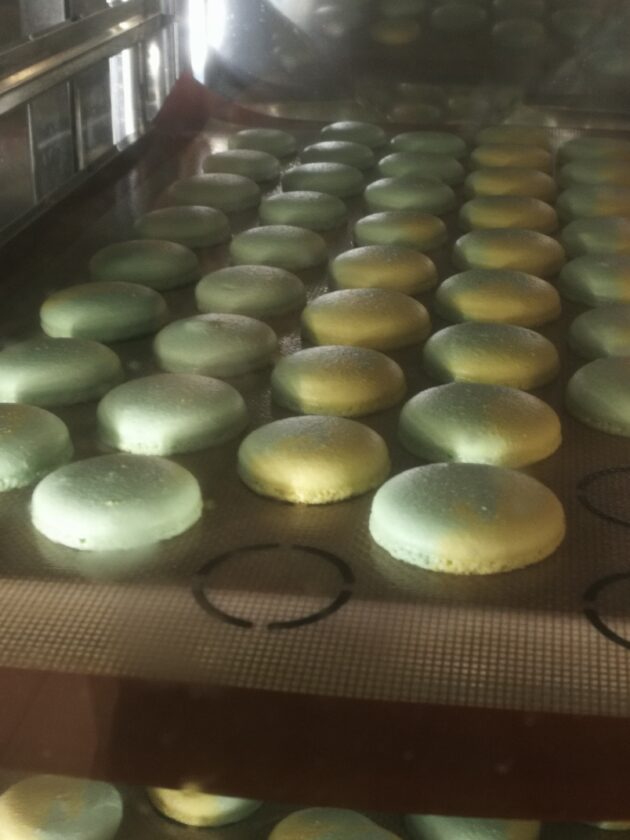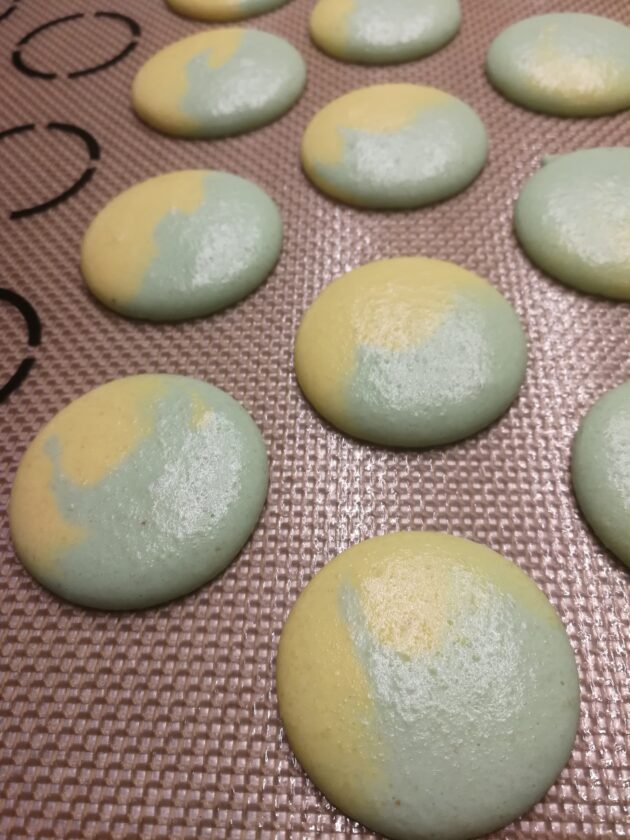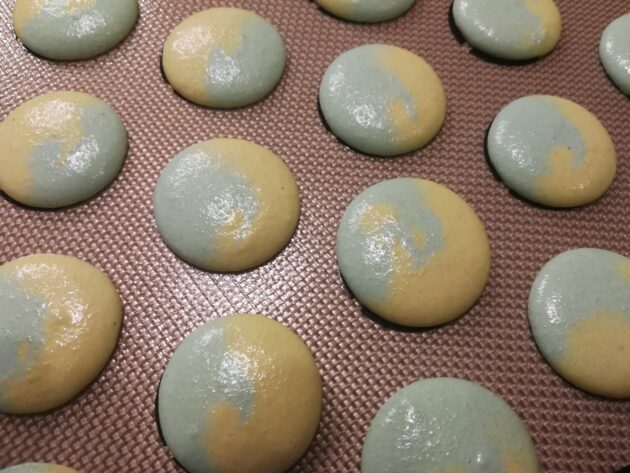I ploughed through my work this Friday and left myself enough time to try my hand at macarons, something I hadn’t made since 2015. Macarons are a simple delicacy made from the finely ground flour of almonds, confectioners sugar and egg whites, then combined with the required quantity of Italian meringue. Colour and decoration are usually added during the process to give it its gay and colourful appearance.
The word macaron is translated as ‘paste’ from the Italian Venetian dialect and, like a large number of Italian foods claimed by the French, it was introduced into France by Catherine de Medici’s kitchen that accompanied her on her move to Paris to marry King Henry II in 1547.
Macarons are usually served up as little sandwiches filled with ganache or jam and make up one of the small delights served as part of the French petit four dessert. The petit four is translated from French as small oven, referring to a dying oven. When the heat was low, small macarons and meringues were cooked at low temperatures.
Macaron (this amount will make about 60 macarons)
The macaron is made in two separate parts which are then combined before piping.
Ingredients for the paste:
- Almond flour sifted through fine sieve x 150 gram
- Confectioners sugar sifted through fine sieve x 150 gram
- Egg whites sieved x 55 gram
Now while all this sifting is arduous it is essential if you want a successful outcome.
Ingredients for Italian meringue:
- White sugar x 150 gram
- Water x 37 gram
- Egg whites sieved x 55 gram
Method:
Sift the almond flour and confectioners sugar and combine in a bowl, then add the egg white and mix using a spatula until a uniform paste is attained. Set aside.
In a small saucepan add the sugar and water and heat on a medium-low heat. Add the egg whites to the mixer and fit the balloon attachment for whipping. Bring the sugar mixture to a temperature of 118°C, remove from the heat and turn on the mixer to high.
When the egg whites start to rise (only 15-20 seconds) slowly turn the mixer to low and add the molten sugar, pouring in a constant slow stream down the inside of the mixing bowl, making sure that the liquid sugar is running down the inside of the bowl into the egg white and not being poured directly into the egg white itself.
Turn the mixer back up to medium-high until the meringue mixture cools and high peaks are attained.
Add the Italian meringue bit by bit into the paste mixture, folding gently until the mixture becomes combined. If you want to add a colour and you have a quality professional colorant, add a few drops only.
Taking a piping bag and a number 6 plain piping bag nozzle, pipe onto a silpat or silicone baking sheet a small round blob. Make sure there is distance around each one, as they spread. Once this is done, bang the tray down hard on a flat bench surface several times; this assists the macaron to become perfectly round.
At this point you can sprinkle a little dehydrated grated coconut or sprinkle, using a sieve, a dusting of cocoa powder.
Now leave the trays of macaron out for at least an hour until a hardish film forms on the top. This ensures it will rise uniformly when baked.
I bake my macarons at 130°C for 20 minutes (do not bake in fan mode), then leave them to cool for an hour, pop them off the silicone mat using a small knife or paletta, place in a sealed box and store in the freezer until needed.
You can serve them as they are or sandwich them with a filling of jam or ganache. Either way they are a tasty and colorful little treat.
Buon Appetito
If you enjoyed this recipe why not share it with your friends via social media or e-mail? If you want a copy of your own select the print option at the top of the page.

